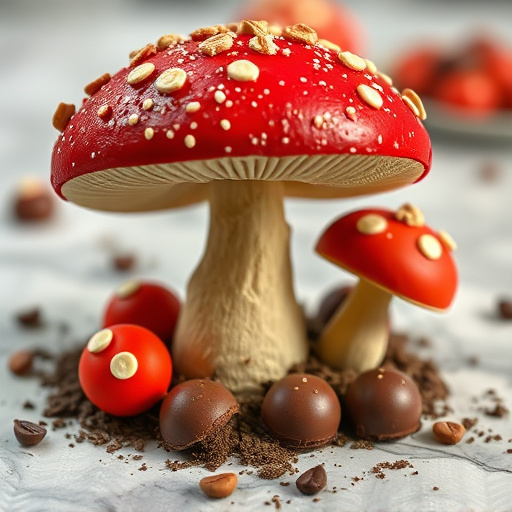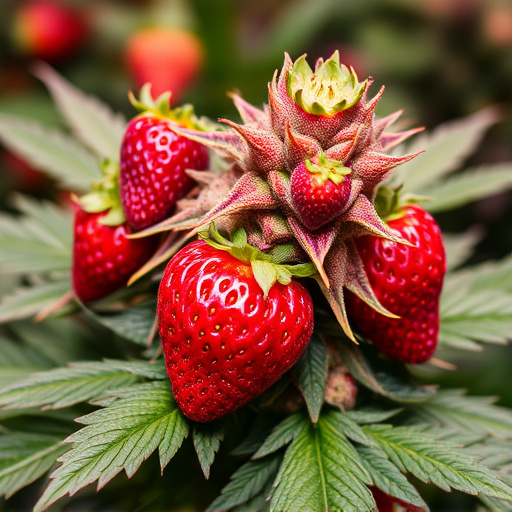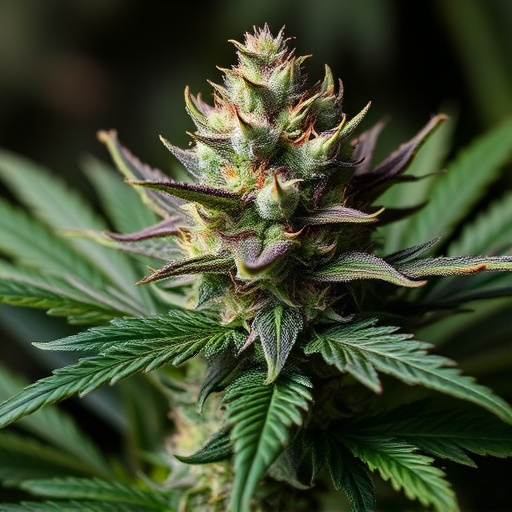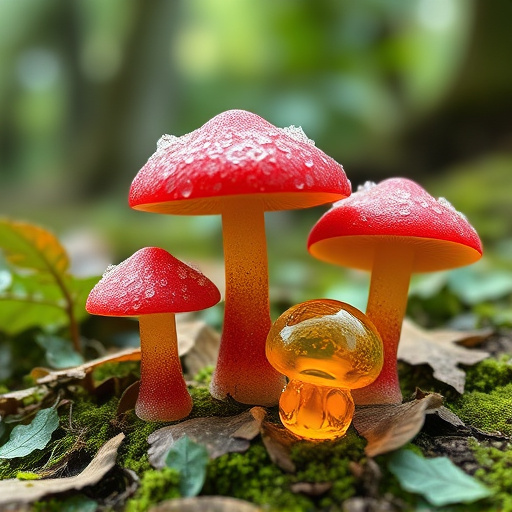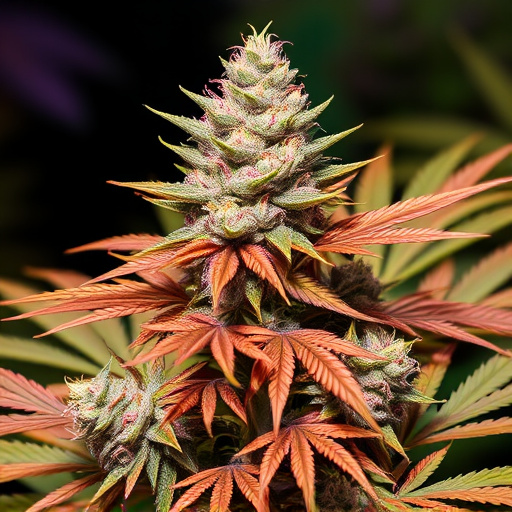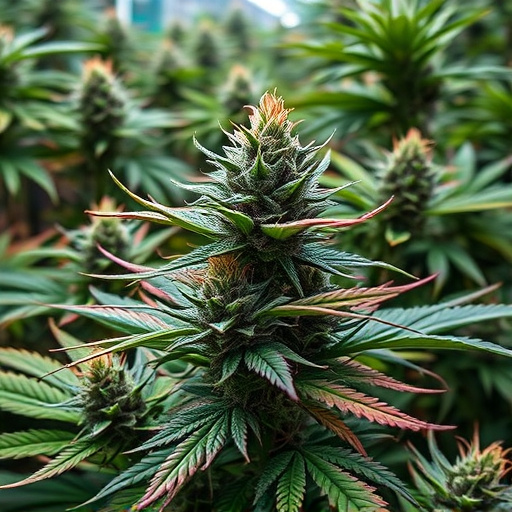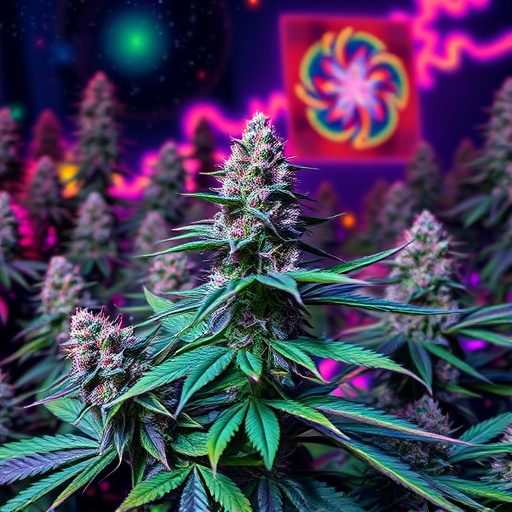Psychedelic cannabis strains, rich in THC and distinctive cannabinoid profiles, interact with the endocannabinoid system to significantly impact appetite. These interactions, which mimic neurotransmitters like anandamide, can trigger hunger cues. Effectiveness varies based on individual consumption habits, strain composition, and terpenes present. Exploring these strains requires a holistic approach that considers not just THC levels but also CBD and terpenes' roles in sensory perception and emotional responses. As the ECS is vital for physiological balance, including appetite regulation, cannabis's ability to modulate it offers potential therapeutic benefits for appetite disorders, making psychedelic strains a promising game-changer.
In today’s world, maintaining a healthy appetite can be challenging. Cannabis has emerged as a potential solution, with its ability to stimulate eating through the endocannabinoid system. This article delves into the best strains for appetite stimulation, focusing on both traditional and psychedelic cannabis varieties. We explore popular psychedelic strains known for their appetite-enhancing properties, providing detailed profiles and THC/CBD ratios. Additionally, we offer safe use guidelines, including dosage suggestions, potential side effects, and integration with a balanced diet.
- Understanding Appetite and Its Connection to Cannabis
- – Explaining the role of endocannabinoid system in regulating appetite
- – How cannabis interacts with this system to stimulate eating
Understanding Appetite and Its Connection to Cannabis

Appetite stimulation is a complex physiological process deeply intertwined with our emotional and sensory experiences. Cannabis has long been recognized for its ability to enhance or suppress appetite, depending on various factors including strain composition and individual consumption habits. Certain psychedelic cannabis strains, known for their potent effects, can significantly influence hunger cues and cravings. These strains often contain elevated levels of tetrahydrocannabinol (THC) and unique cannabinoid profiles that interact with our endocannabinoid system, potentially triggering feelings of pleasure and heightened sensory perception, ultimately leading to increased appetite.
Understanding the connection between appetite and cannabis involves delving into the plant’s ability to mimic certain neurotransmitters in our brain, such as anandamide, which plays a role in regulating hunger. Psychedelic strains, with their diverse genetic backgrounds and chemical compositions, offer a wide range of experiences that can either enhance or disrupt eating patterns. This is why exploring specific strains for appetite stimulation requires consideration of not just THC content but also the presence of other cannabinoids like cannabidiol (CBD) and terpenes, which contribute to the overall effect and can modulate the user’s sensory perception and emotional state during consumption.
– Explaining the role of endocannabinoid system in regulating appetite
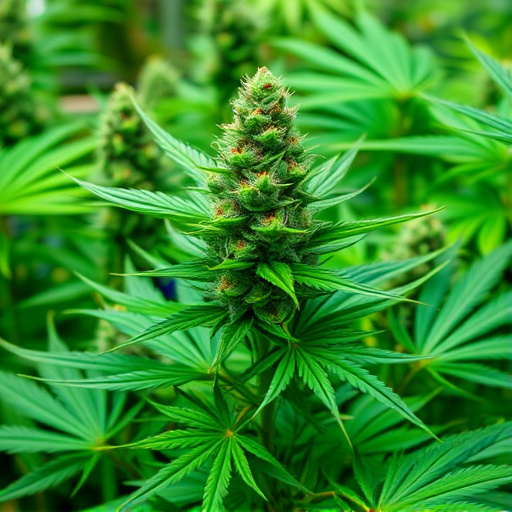
The endocannabinoid system (ECS) plays a pivotal role in regulating various physiological processes, including appetite. This intricate system, named after the cannabis plant, utilizes endocannabinoids—molecules produced by our bodies—to maintain homeostasis. When we consume psychedelic cannabis strains, these compounds interact with the ECS, leading to a cascade of effects that can stimulate appetite. The binding of tetrahydrocannabinol (THC), one of the primary psychoactive compounds in cannabis, to cannabinoid receptors influences hunger signals and can even alter taste perception, indirectly affecting eating habits.
Understanding this interaction is crucial when exploring how specific psychedelic cannabis strains may aid in appetite stimulation. Certain strains known for their high THC content or unique cannabinoid profiles have been anecdotally reported to increase appetite in individuals. However, it’s important to note that the effects can vary widely between users and should be approached with caution, especially considering potential health risks associated with excessive cannabis consumption.
– How cannabis interacts with this system to stimulate eating

Cannabis, particularly psychedelic strains, interacts with the body’s endocannabinoid system (ECS) to stimulate appetite. The ECS plays a vital role in regulating various physiological processes, including eating and metabolism. When cannabis is consumed, its compounds, such as THC and CBD, bind to receptors within the ECS, leading to a cascade of effects. This interaction can enhance hunger by increasing the levels of endocannabinoids, which are naturally produced by the body to regulate appetite.
Psychedelic cannabis strains, known for their potent effects, often contain higher concentrations of THC, the primary compound responsible for inducing appetite stimulation. As THC binds to CB1 receptors in the brain, it can alter eating behaviors and increase motivation to consume food. Additionally, these strains may also have other therapeutic compounds that work synergistically with THC to enhance the overall appetite-stimulating effect.
In understanding the intricate relationship between the endocannabinoid system and appetite, it becomes evident that certain cannabis strains, particularly psychedelic varieties, can offer a natural approach to stimulating eating. These strains, with their unique chemical profiles, interact harmoniously with our bodies’ built-in hunger regulators, making them potential allies in managing conditions marked by appetite suppression. While further research is needed, the current evidence highlights the therapeutic potential of psychedelic cannabis strains in promoting healthy eating habits and overall well-being.



